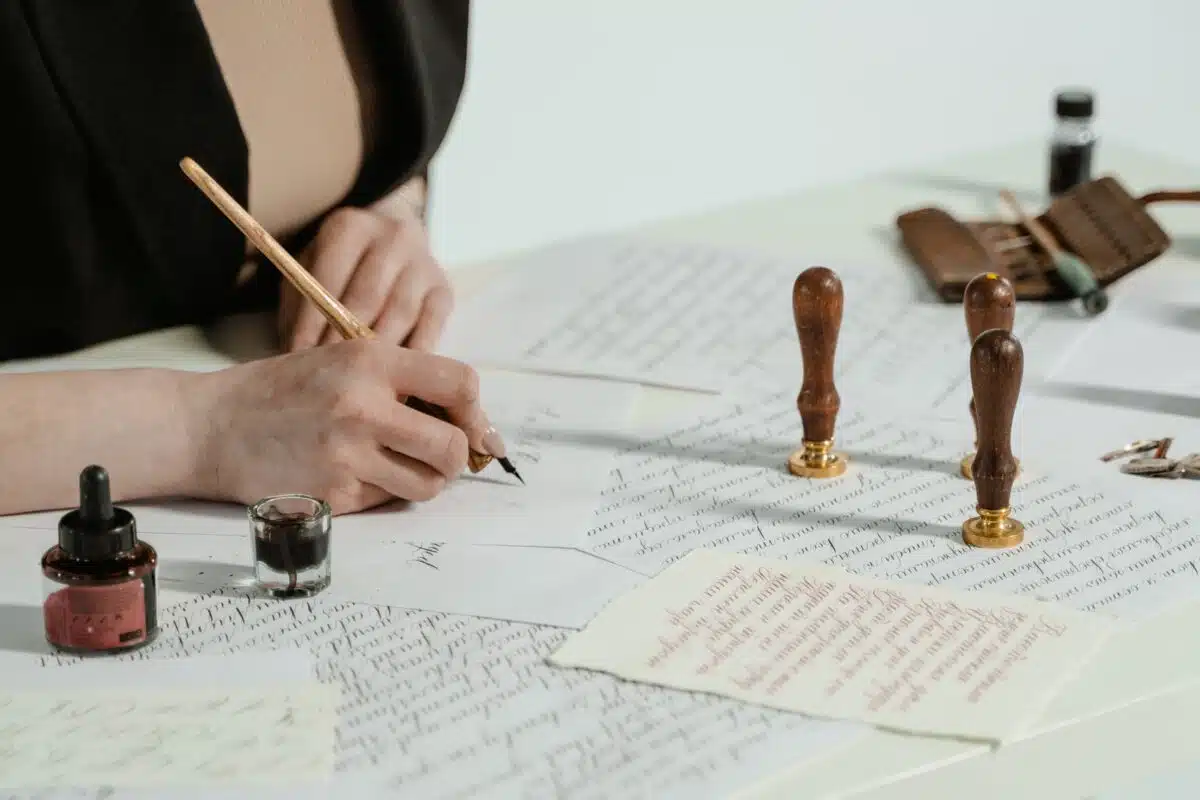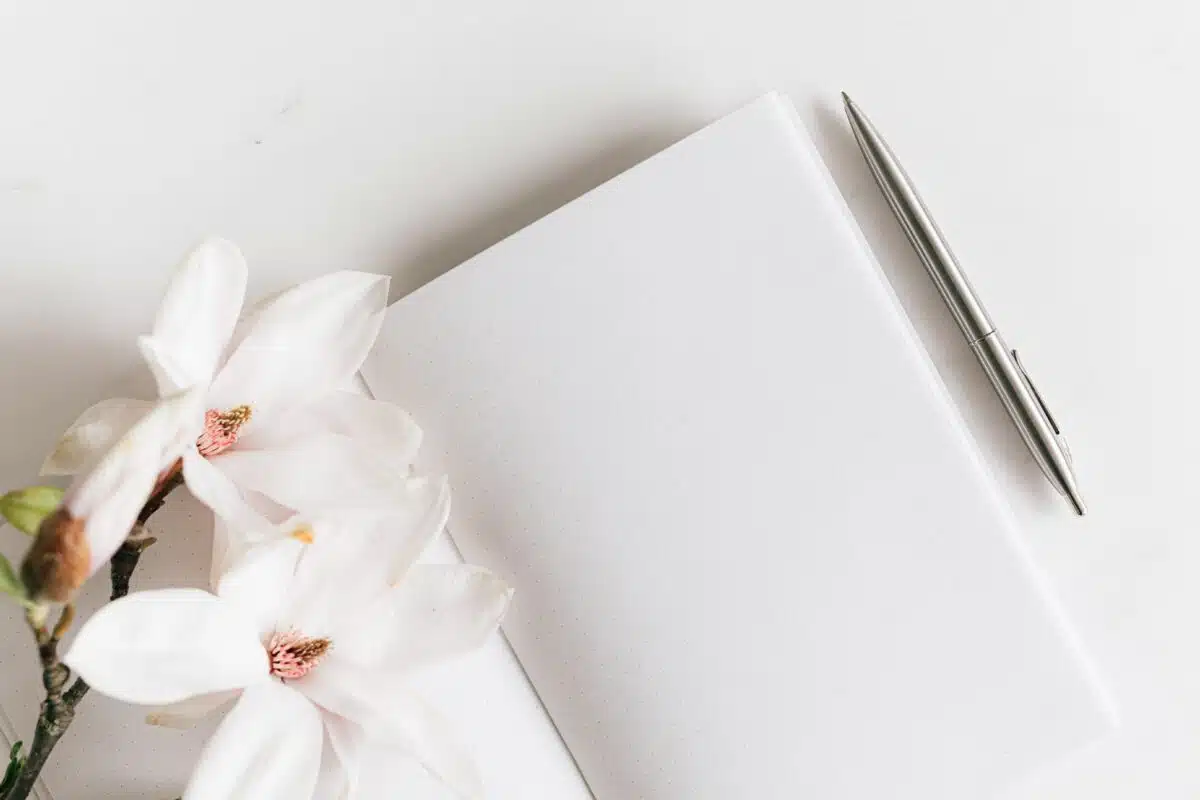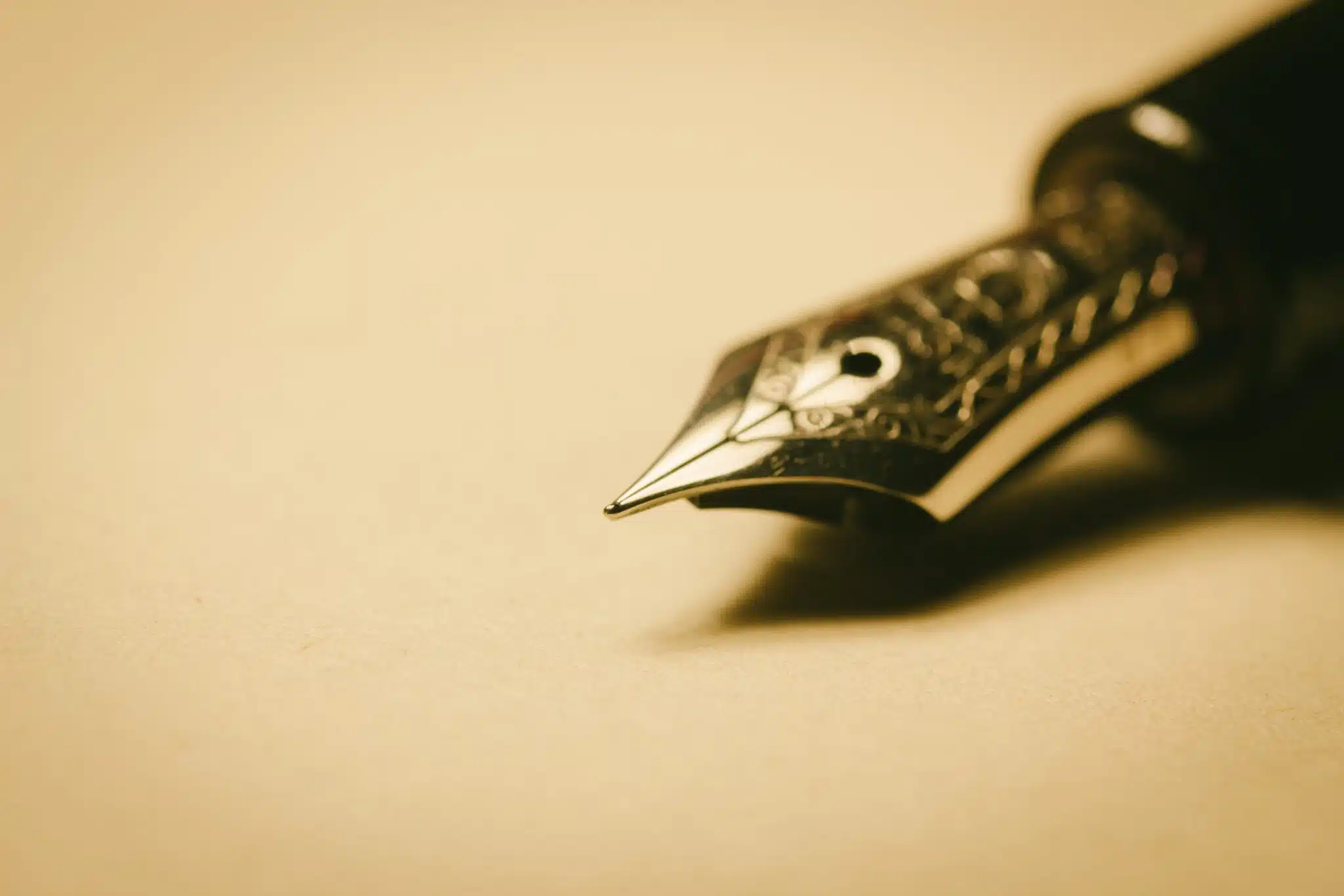Here’s what the Epithalamion poetry form is:
The word “epithalamion” is commonly understood to reference a poem honoring a wedding day, wedding ceremony, or bride-to-be (or some combination of the three).
While the modern term is a little ambiguous, the term traces its roots to a Greek poem form meant for the bride on the way to her marital chamber.
So if you want to learn all about the Epithalamion poetry type, then you’ve come to the right place.
Let’s get started!
- Epyllion Poetry Form: Sculpt Grand Tales
- Mimic Poetry Form: Unleash Your Inner Wordsmith
- Anagrammatic Poetry Form: Puzzle Your Thoughts
- Patchwork Poetry Form: Stitch Words of Wonder
- Cento Poetry Form: Inspire With Melodic Blend

Forms of Poetry: Epithalamion

An epithalamion (also called epithalamium) is a poem meant to celebrate marriage, though in ancient times it was actually a song meant for the bride on the way to her marital bed.
In more modern times, it would be more typical for an epithalamion to be recited at the wedding ceremony or reception.
The only difference between the terms epithalamion and epithalamium is that the former is the Greek whereas the latter is from Latin.
They refer to the same style of poem.
The original Greek epithalamion poems honored Hymen, goddess of marriage.
It should be noted that while poems honoring a marriage are not even remotely rare, it is uncommon for the writers to actually call them epithalamion poems.
Many professional writers, including poets, may not even know the term exists.
The term is almost functionally dead.
It would be more common in the modern era to hear someone refer to such poems as wedding odes, if they even bother referencing a form at all.
Basic Properties of an Epithalamion

| Rhyme Structure | Depends on the poet |
| Meter | Depends on the poet |
| Origin | Ancient Greece |
| Popularity | Largely obsolete outside of use as a referential term |
| Theme | Marriage; especially the wedding day itself |
Edmund Spenser’s Amoretti and Epithalamion

One of the surest reasons that this term is still clinging on to dear life rests in the hands of 16th century poet Edmund Spenser, who wrote an extensive poetic compilation titled Amoretti and Epithalamion.
The titular Epithalamion in question is a lengthy ode that goes over every moment of his wedding day in detail, capturing the feelings of that day and his love for the bride-to-be.
The poem is an impressive 433 lines, with 365 of those lines representing the days leading up to the wedding day.
Each of the 24 stanzas is meant to represent one hour of the wedding day.
An impressive attention to detail is shown throughout the poem, both narratively and structurally.
It is, quite unironically, a labor of love.
In keeping with the classical theming, the poem even includes an invocation of the muses.
It is a poem uniquely obsessed with the history of poetry itself and is much a love letter to poetry as an art form as it is a love letter to Elizabeth Boyle.
from Epithalamion by Edmund Spenser
Wake, now my love, awake; for it is time,
The Rosy Morne long since left Tithones bed,
All ready to her silver coche to clyme,
And Phoebus gins to shew his glorious hed.
Hark how the cheerefull birds do chaunt theyr laies
And carroll of loves praise.
Above is just one short excerpt from the poem.
It is largely a narrative poem, going over the events of the wedding.
As you can see from the example, references to Greek mythology are dotted throughout the work and rhyme is prevalent, as was the standard of the time.
This is easily a poem that could have only existed when it did, at the height of Elizabethan poetry.
In the above example, Spenser recalls the morning of the wedding and his eagerness at the thought of marriage.
While it may be hard to parse through the admittedly archaic language, Spenser’s excitement here is comparable to a boy’s eagerness on Christmas morning, a fitting tone to begin the day with.
Just to answer the curiosity of those who may be asking, the Amoretti part of the title refers to a sonnet cycle included with the collection.
More specifically, it’s a sequence of no less than eighty-nine sonnets describing their courtship and eventual marriage.
In all, Amoretti and Epithalamion is easily one of the most comprehensive attempts at describing one’s own experiences with marriage in the English language.
If there is any singular reason that the word “Epithalamion” is still kicking around, it is likely due to the literary significance of this one work.
Real World Usage of “Epithalamion”

While the word epithalamion technically refers specifically to the ancient Greek poem form, written by such famous names as Sappho, Pindar, and Theocritus, it’s usage in modern times has become much more ambiguous.
Other writers have made their own spins on the form, with perhaps the most noteworthy being a poem by E.E. Cummings (simply titled Epithalamion, much like its 16th century predecessor).
It occasionally sees usage in drama and music.
Some refer to Shakespeare’s A Midsummer Night’s Dream as an epithalamion, though this is an unusual usage of the term.
Composers like Johann Wanning, Ralph Vaughan Williams, and Roberto Gerhard have also used the term, usually as the title of musical pieces inspired by romance, as one would expect.
If we’re being brutally honest, however, the term’s spread seems to be slow, gradual, and most importantly it seems to be largely coincidental.
Many of the artists who use the term are using it in homage to another writer’s work of the same name, or as a sort of historical reference.
There are no structural elements acting as a common thread across this disparate body of largely unrelated works.
Nonetheless, the prevailing wisdom is that the words epithalamion and epithalamium are always meant to evoke images of marriage and courtship, dating back to their inception and to their long-dead roots as an actual poetic form.
You would not and should not write a poem about a pristine day for fishing and call it Epithalamion because there are certain expectations that come with using the word.
Tips for Writing an Epithalamion

The first thing you must recognize is that you will most likely not be writing an epithalamion in the strictest sense, since that would require you to learn about the conventions of ancient Greek poetry and the conventions of that language at the time, and your target audience would be dead by several millennia.
What you would really be doing is writing a work honoring the traditions associated with the word itself.
Any good epithalamion should, first and foremost, glorify the sanctity of marriage and the promise of happiness that’s meant to come with it.
Special attention should be spent on honoring the bride in particular, as that has understandably become the norm.
If you would like your work to feel especially justified in calling itself an epithalamion, or even being titled as such, then one could go the Spenser route and make copious references to Greek mythology and culture.
Whether you go the extra mile or not is up to you, but if you’re not going to make the poem feel a little more Greco-Latin in its execution, then it begs the question of why you’re even using Greco-Latin terms to begin with.
As for how to write a poem for a wedding in a more broad sense, just be sincere.
Whether you’re the best man, a bridesmaid, the father of the bride, or even the groom himself, a wedding is no place for insincerity.
Make sure the poem is as open and loving in its declarations as possible.
Shower blessings and prayers upon the happy couple.
It’s okay for a wedding poem to be a little naïve and optimistic.
Personally, I think it’s far more sincere to desperately wish happy fairytale endings upon our peers than it is to throw our own insecurities at them.
After all, don’t we all ultimately just want our loved ones to be happy?
Poet’s Note

There are surprisingly few online sources that go into any sort of depth on what the original epithalamion poems would have looked like in terms of structure and meter.
Not that it would have been especially relevant to the modern era, but I’m just surprised at the lack of accessible information.
Efforts to conserve Greco-Latin traditions are usually extensive and far-reaching, so this was an unexpected blind spot in what’s normally an ocean of well-researched documentation.
Comprehensive Collection of Poetry Forms: Craft Words Into Art

Dare to traverse the entire spectrum of poetic forms, from the commonplace to the extraordinary?
Venture from the quintessential Sonnet to the elusive Mistress Bradstreet stanza, right through to the daunting complexity of Cro Cumaisc Etir Casbairdni Ocus Lethrannaigecht.
For those with a zeal to encounter the full breadth of poetry’s forms, this invitation is yours.
Start exploring the vast universe of poetic ingenuity with our comprehensive array of poetry forms right now!
